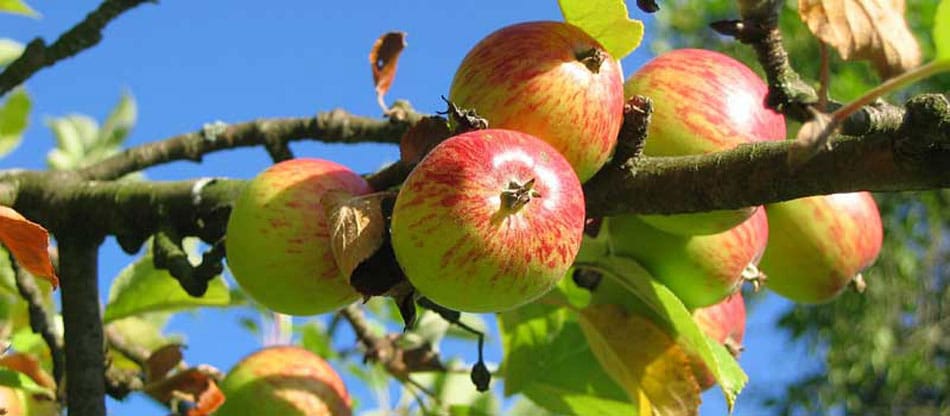
When and Why To Prune Fruit Trees in Central NJ/PA
Do your fruit trees have a lot of fruit each year, or are there just a few here and there? Are they healthy, or do they need constant spraying to keep disease and insects at bay?
Fruit trees, including apples, pears, peaches, plums and others, need regular pruning to stay healthy and provide you with plentiful fruit.
Unfortunately, pruning fruit trees is a task that's often neglected, leading to trees that create a lot of shade but few fruit.
When To Prune Fruit Trees
Proper pruning while fruit trees are still dormant helps set them up for a more successful growing and fruiting season.
Most of the structural pruning and major pruning cuts should be done during the dormant season in late winter or early spring before any signs of new growth.
Here in central New Jersey and Pennsylvania, that means fruit trees should be pruned in February to early March, provided temperatures aren't too cold or too warm. Severe cold can damage or kill newly-cut branches so it's best to wait until temperatures have risen to over 20F. But don't wait so long that you see buds forming on branches - the tree's no long dormant at that point.
Why Fruit Trees Should Be Pruned Regularly
The same general pruning guidelines apply to fruit trees as to most other trees - always prune to remove dead, diseased or damaged wood. Doing so limits the likelihood of insects and diseases attacking the tree through open wounds.
You should also prune to improve tree structure and maintain long-term health.
Beyond that, fruit trees have some specific pruning needs to encourage fruit production.
Water sprouts should always be removed. These thin, vertical, quick-growing branches drain energy from the tree and don't produce fruit. They crowd the center of the tree, damage branches by rubbing against the bark, and create too much shade for fruit to ripen.
Tall fruit trees make it difficult to reach the fruit. Proper pruning keeps fruit trees shorter while still maintaining the right structure, such as a central leader, strong crotch angles to prevent splitting, and layers of scaffold branches to hold up the fruit. Improper pruning, like topping a fruit tree or whacking back branches to make the tree smaller, will not only damage tree structure (making it potentially unsafe and vulnerable to breaking apart), but will seriously reduce the amount of fruit it produces.
Good pruning also encourages the development of new branches that will later bear fruit, whereas poor pruning just leads to a lot of useless watersprouts.
It's also important to prune tree fruit trees to allow light to penetrate into the center of the tree (so fruit can ripen) and increase airflow (to reduce the risk of fungal problems).
If you'd like to learn more about dormant fruit tree pruning, see our own Hans Hanbicki in the video below for information about advantages and pruning techniques.
You may also enjoy The Holistic Orchard, by Michael Phillips. The book is highly informative and his website is a phenomenal resource about growing healthy fruit trees.
If you have fruit trees, check out our page on growing healthier, pesticide-free fruit.
We offer a full range of organic fruit tree care that's specifically tailored to the needs of fruit trees in the central NJ and PA area.
